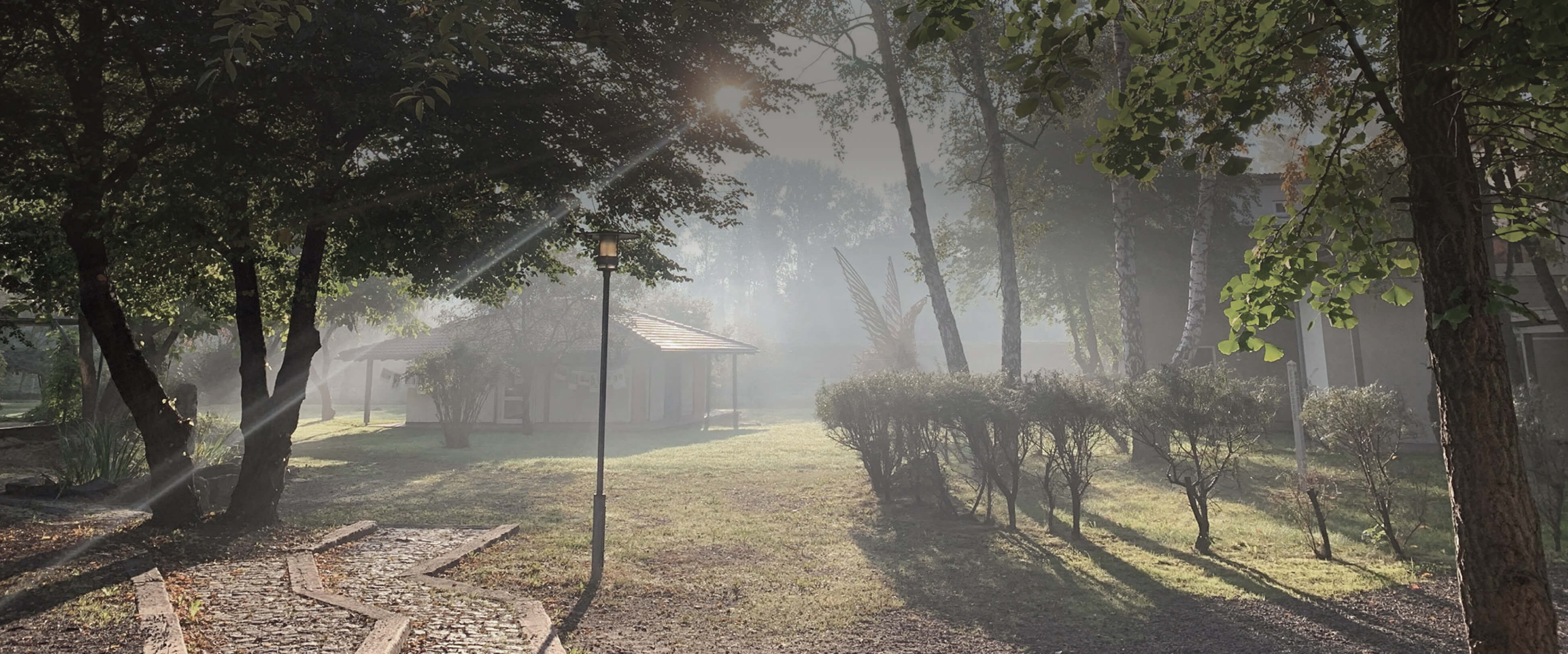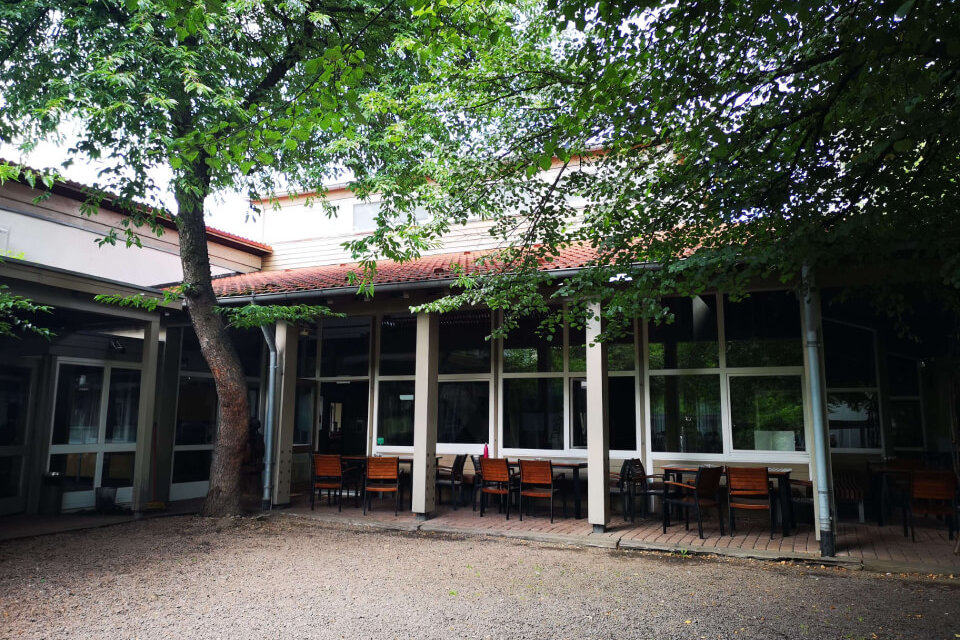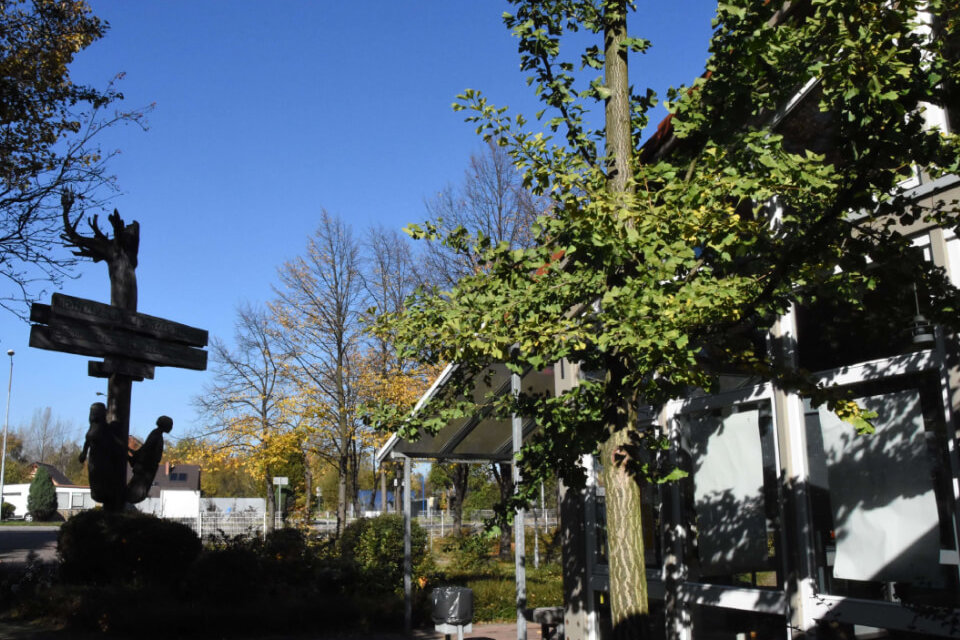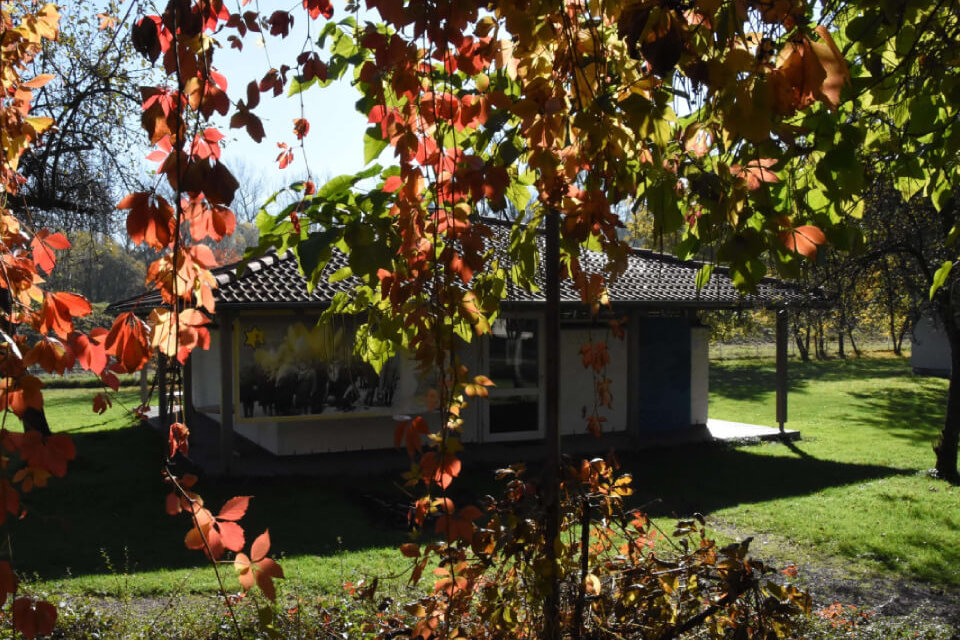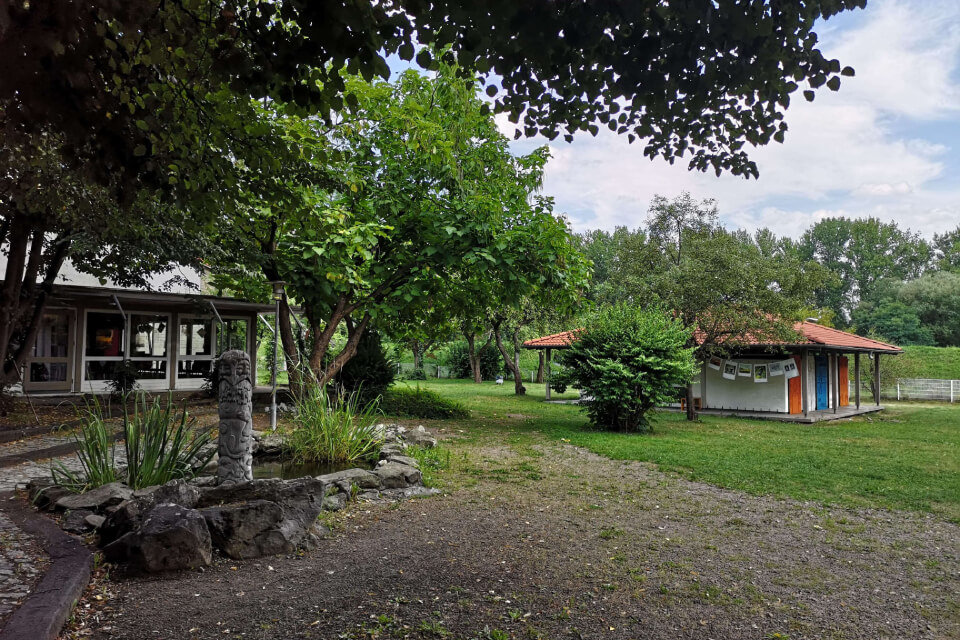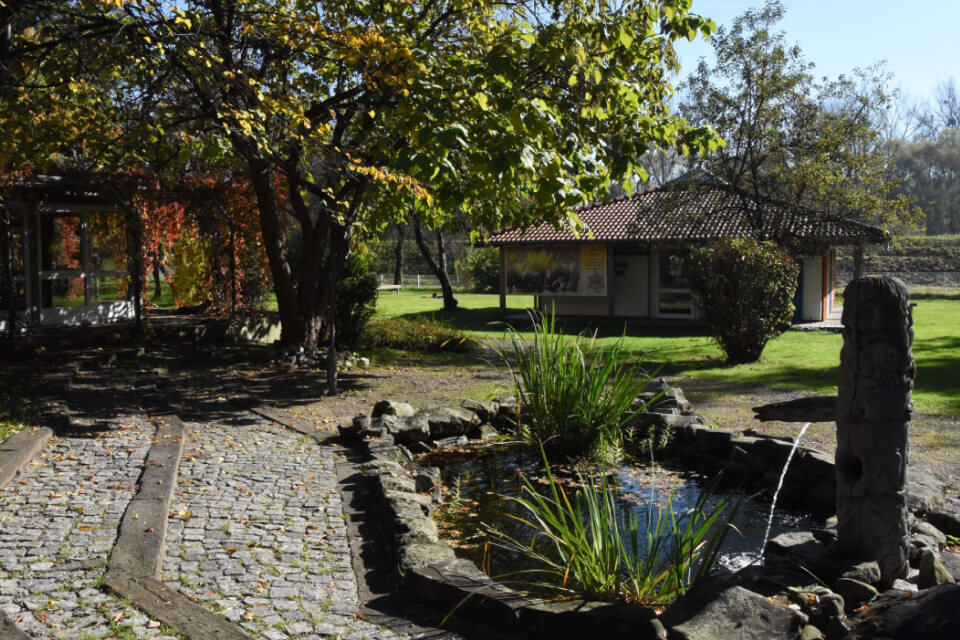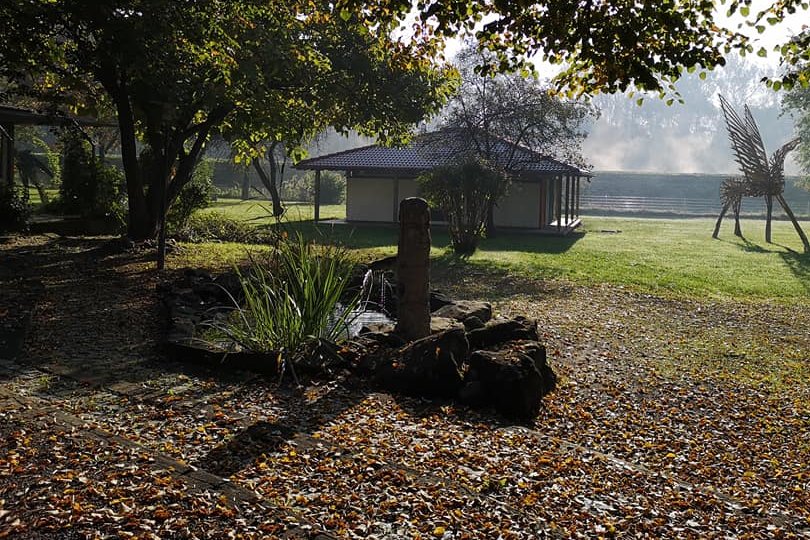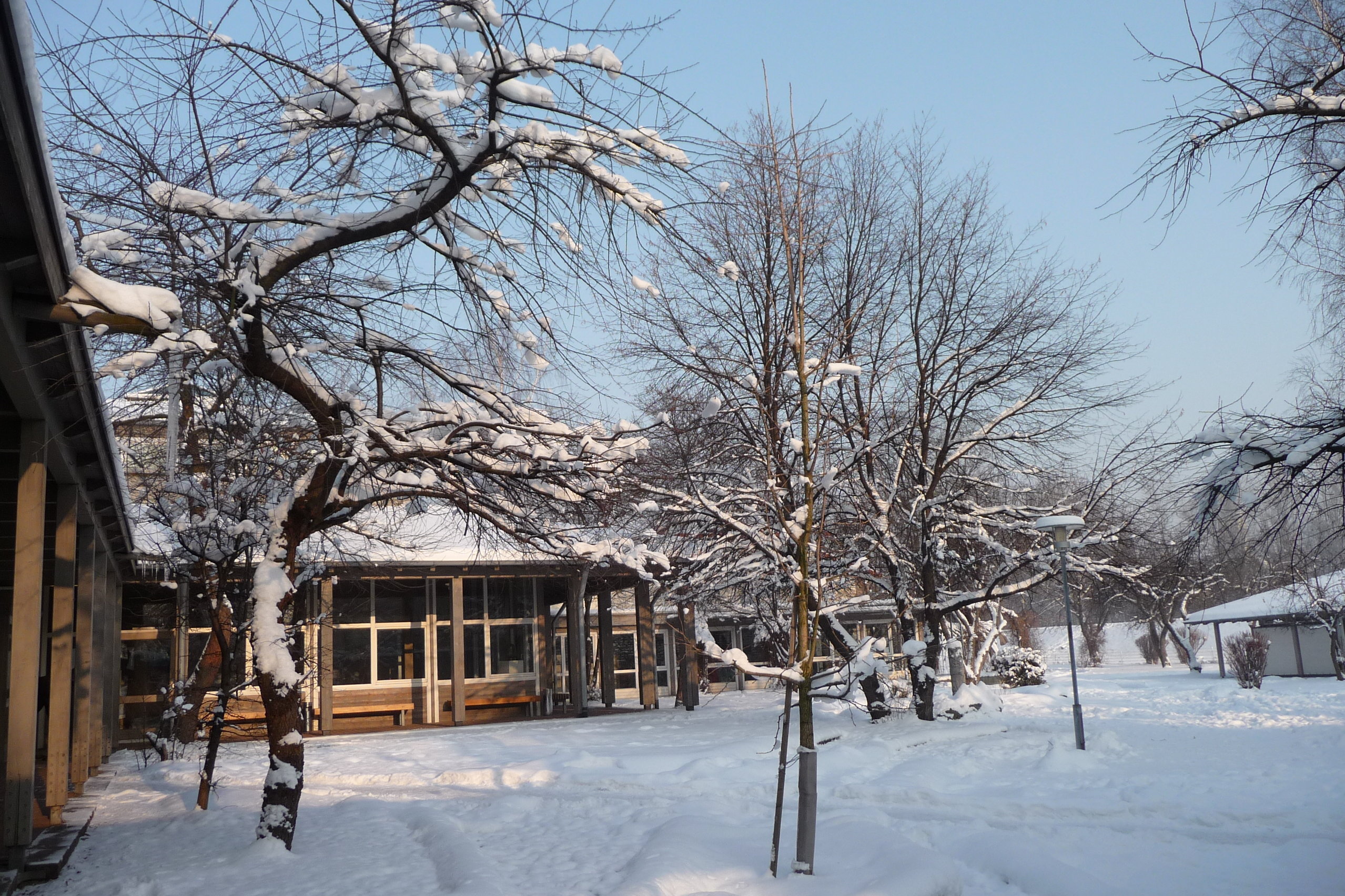Architecture
The task to design and construct a meeting place for young individuals from different nations all over the world in Oświęcim was a gift and a duty for me and my colleagues. A gift, because I saw this task, that was never put on paper and certainly not formulated in form of a contract, as a sort of a challenge, a calling that I accepted. A gift, because I had the chance to utilize my professional experience, political beliefs, and my Christian faith. - said Helmut Morlok, architect of the IYMC, in December 1986 on the occasion of the celebratory inauguration of the IYMC.
The Centre started to exist in the consciousness of the inhabitants of the city and young visitors from all over the world as a place with an exceptional atmosphere - as a place which one enjoys visiting and wants to return to, even after many years. Here, the special architecture of the Centre plays an important role: exceptional in its simplicity, noble through the materials used, functional and - what many visitors state "a house with a soul".
The house designed by the German architect Helmut Morlok consists of a complex of free- standing, one story pavilions. It is open and organized around its central parts: the forum for meetings and discussions as well as the garden. It's an architecture full of nooks and places for talks in a small circle, which create an intimate atmosphere and thus stands in utter contrast to the tactic of insight into everything, practiced within the fences of the camp. Here you can find a spot for meeting up and games in groups, but also for thoughtful talks or contemplation in silence.
The exceptional architecture plays an important role in creating the atmosphere of the Centre. It consists of a complex of free- standing, one story pavilions. It is open and organized around its central parts: the forum for meetings and discussions as well as the garden. An important role in the creation of this special atmosphere in the IYMC plays the material used by the architect - wood. A raw material which is soft, decent, and perceived as pleasant, creates another contrast to the repressive looking brick or heavy concrete used in the construction of the Auschwitz camp.
